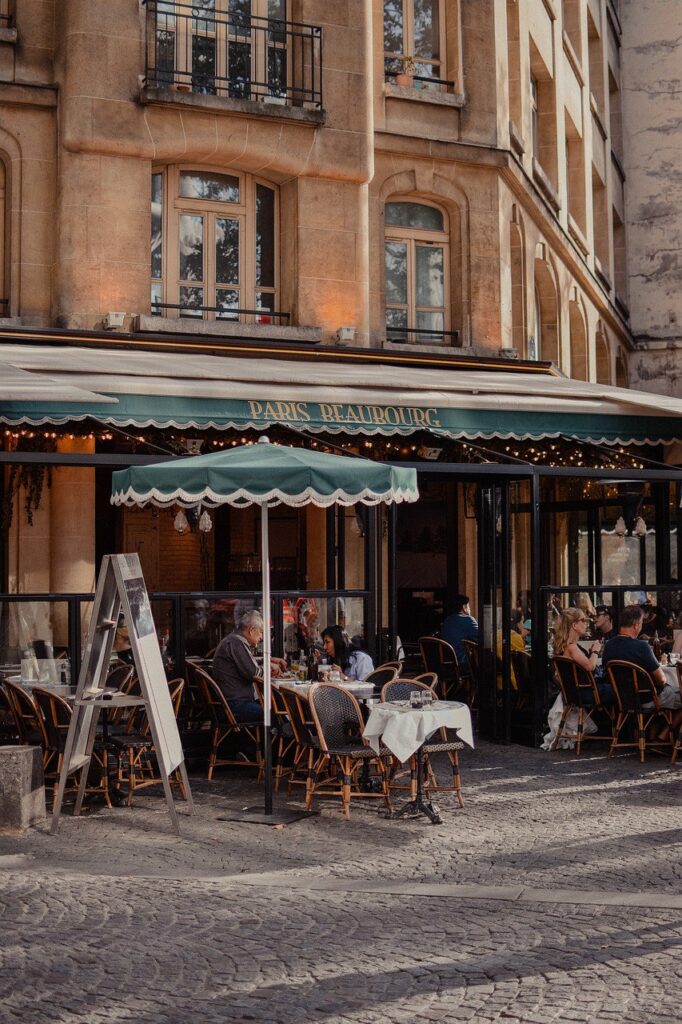Differing Tastes
French vs. Korean Bakeries
By Alice Rigaud-Modelin
What has struck me in my culinary journey is the differences between my country, France, and South Korea. In Korea, we look more for sweet and sour mixtures with sticky textures, a lot of caramelized sensations, I would say, and broth as well. In traditional French culinary culture, we stick to simple textures like the natural product and tastes that I would say are also natural. For example, let’s take a chicken dish in France: roast chicken. The meat is in its natural state, with no real preparation other than draining it and brushing it with butter for those with a sweet tooth. Often accompanied by potatoes cooked in the meat’s cooking juices, it is a very simple dish. Now let’s take, for example, samgyetang (삼계탕), chicken and rice soup, a traditional dish during the heat of summer. We prepare a stuffing with rice and vegetables already cooked or rinsed. Cooked in a pressure cooker, then served in broth. Two very similar and yet very different dishes, each with products typical of its territory (potatoes in France and condiments in South Korea).

I have had the opportunity to check out a lot of bakeries in South Korea, and I have been able to discover products such as a type of hot dog with vegetables and hot sauce on top. In South Korea, you can find many bakeries claiming to offer French products. Certainly, the background is French; I would say that half of the products offered are historically French. Unfortunately, the execution is not always very close to a genuine French product.
Take the croissant, for example. We find the fundamentals (shape, color, crispiness), but the most interesting thing in a croissant that you could taste in France is the mixture of softness and crispness as well as the taste of real butter. I think that one of the things that French people living in South Korea miss the most is one of the French’s favorite pastries for breakfast, similar to the croissant, which, I think, could have great success in Korea too. This is pain au chocolat. It’s not really bread; the Americans translate it into a chocolate croissant. It is a reproduction of a croissant, but in a shape closer to a square and with two chocolate bars inside!
The products are already very different, as are their serving methods. In Korea, when you enter a bakery, you take a tray and choose your products directly. In France, the products are displayed behind a window, which gives a feeling of prestige, like at a jeweler’s: “No touching!” The staff will ask what we want to eat, and it is only the staff who can come into contact with the food.
Korean and French restaurants are also very different. In France, we arrive, a waiter seats us, gives us the menu and gives us time to choose. The cutlery is already set on the table. The goal is for the customer to no longer want to move. In South Korea, the atmosphere is more family-style and simple. Customers come in, sit down, give each other their table cutlery and choose from the displayed menu. Then, we call a waiter just to tell them what we want to order. The way of eating can also be very different. In France, everyone orders their own dishes, though sometimes they can be sampled by those you are dining with, but everyone has their own plate and their own dish. In South Korea, it is very common to have large dishes to share together. The portions are often very large. This is why, unfortunately, it is sometimes undesirable to eat alone in a restaurant.
The Author
Alice Rigaud-Modelin is a French student who has been in Korea for three months. She will do an internship in the Gwangju International Center and its GIRC, where she will participate in the realization and creation of projects around cultural diversity and the presentation of French culture.


